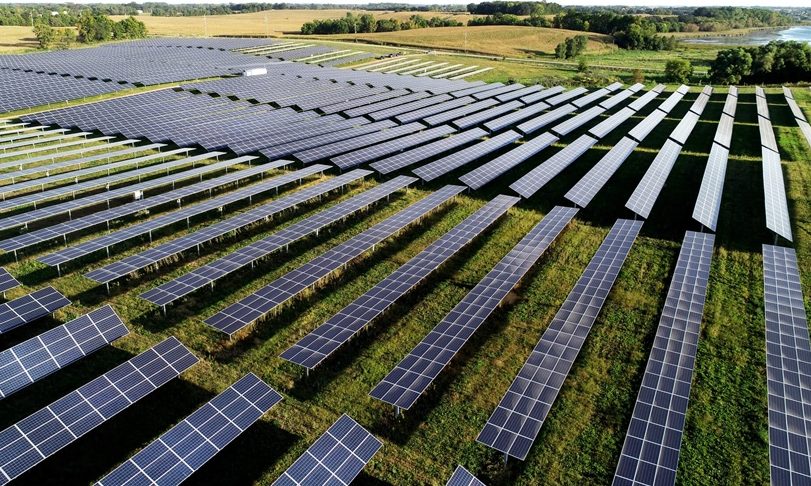
Introduction
Solar energy projects have emerged as a transformative solution for repurposing brownfields, offering immense environmental and economic benefits. This article aims to explore the relevance and importance of solar energy projects transforming brownfields, highlighting their interesting potential and the need for further exploration.
Historical Background
Brownfields, once vibrant areas of industrial or commercial activity, have become abandoned and contaminated spaces. Understanding their significance in environmental and urban development contexts is crucial. Additionally, past efforts and initiatives to repurpose brownfields for renewable energy projects need to be examined. The evolution of solar energy and its expanding role in sustainable development further sets the stage for brownfield transformation.
Key Concepts and Definitions
To comprehend the potential of solar energy projects on brownfields, it is necessary to define both brownfields and solar energy. Brownfields refer to abandoned or underutilized properties, often contaminated, that can be repurposed. Solar energy encompasses various forms and applications, including photovoltaic systems and solar thermal technologies. Transforming brownfields into solar energy projects involves repurposing these sites for clean energy production.
Benefits of Solar Energy Projects on Brownfields
Environmental benefits: Solar energy projects on brownfields contribute to reducing pollution and greenhouse gas emissions. By repurposing contaminated sites, these projects prevent further environmental degradation and promote sustainable land use.
Economic benefits: Transforming brownfields into solar energy projects creates new job opportunities and revitalizes blighted areas. The construction and operation of solar installations stimulate local economies, attracting investments and promoting sustainable development.
Social benefits: Solar energy projects on brownfields increase access to clean energy, particularly in disadvantaged communities. Moreover, these projects foster community engagement, empowering residents and establishing partnerships for sustainable energy solutions.
Process and Considerations for Transforming Brownfields into Solar Energy Projects
Assessing suitability: Evaluating brownfields for solar energy development involves examining factors such as land availability, proximity to electrical infrastructure, and environmental conditions. Feasibility studies help determine the viability of repurposing brownfields for solar installations.
Technical feasibility and challenges: Site-specific challenges, such as soil remediation, structural stability, and grid integration, must be evaluated and addressed during the planning and design stages. Technical expertise and innovative solutions are essential to overcome these obstacles.
Regulatory and legal barriers: Transforming brownfields into solar energy projects requires navigating through regulatory frameworks and addressing legal barriers. This includes obtaining necessary permits, complying with environmental regulations, and addressing potential land use conflicts.
Financing and Incentives for Solar Energy Projects on Brownfields
Available financing options: Grants, loans, and tax incentives are available to support solar energy projects on brownfields. Various government programs and private financing options provide financial assistance, reducing the initial investment burden.
Successful financing models and partnerships: Highlighting successful financing models, such as public-private collaborations and community-based funding initiatives, encourages further investment in solar energy projects on brownfields. Partnerships with utilities and renewable energy developers also play a vital role in financing these projects.
Case Studies or Examples
Examining real-world examples of successful solar energy projects on brownfields demonstrates the versatility and potential of this approach. The outcomes, challenges faced, and lessons learned from these case studies provide valuable insights into the feasibility and benefits of transforming brownfields into solar energy projects. Including diverse examples from different geographical locations showcases the global applicability of this approach.
Current Trends or Developments
Understanding recent trends in solar energy projects transforming brownfields is crucial for staying up-to-date on advancements in the field. This includes new technologies, policies, and research findings that influence project planning, implementation, and operation. Exploring the potential for scaling up and replicating successful projects helps drive further innovation and expansion.
Challenges or Controversies
Implementing solar energy projects on brownfields is not without challenges. Addressing these challenges, such as community engagement, environmental justice, and land use conflicts, is necessary for successful project implementation. Additionally, potential controversies or differing viewpoints regarding brownfield transformation should be examined to foster a balanced and informed understanding of the topic.
Future Outlook
Speculating on the future implications and potential growth of solar energy projects on brownfields allows for envisioning the transformative impact of this approach. Emerging technologies and innovations, such as floating solar and solar-powered battery storage, hold promise for accelerating the adoption of solar energy on brownfields. Highlighting potential barriers and opportunities encourages further development, research, and expansion in this field.
Conclusion
In conclusion, solar energy projects transforming brownfields offer a unique opportunity to unlock environmental and economic potential. By repurposing contaminated sites, these projects contribute to sustainable development, reduce pollution, and create new job opportunities. Further research and exploration of this topic are crucial to fully realize the benefits and address the challenges associated with solar energy projects on brownfields.